CORRECTION…REPLACE MASTODONT WITH MAMMOTH
alan skeoch
Dec. 2018
Big Mistake…my lost tooth came from a Woolly Mammoth…not a Mastodont. Apologies to all including the Royal Ontario Museum
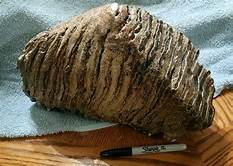
The molars of Woolly Mammoths are ‘layered’…as was the tooth given to me by the placer gold miner in 1960
That ‘mastodont tooth at the Royal Ontario Museum was too dissimilar from the tooth given to me by the gold miner in
Dublin Gulch. My tooth had layers of tooth stuff (wrong word)…sort of like a sandwich…a big thick sandwich. The mastodont (or mastodon)
tooth was solid much like my own molars.
My tooth belonged to a Mammoth as opposed to a Mastodon? The two creatures
are often confused because they lived about the same time and both became extinct in the last ice age. With one exception, s herd
of small hairy mammoths survived the ice age living on Wrangel Island until about 4,000 years ago when they were likely killed by human
hunters.
So I searched for a picture of a hairy mammoth tooth and, Presto, it matched my memory of my ancient tooth exactly.

Woolly mammoth molar..ridged
Not only does the tooth match but the movement matches. Mastodons were found in North and Central America from 30 million years ago until
about 12,000 years ago when they disappeared along with most Hairy Mammoths. Scientists have mixed opinions about the causes of their
extinction but most scientists believe we human beings had a lot to do with it.
Mammoths evolved in Africa 5.1 million years ago and moved through Asia eventually to North America. The woolly or hairy mammoth from which
my tooth came evolved 250.000 years ago. Change is slow but happens constantly.
A lot of people get the two confused. So I am not alone. They look alike. One of the key differences is the teeth. A mastodon tooth has cone shaped
cusps which facilitate the crushing of leave and wooden branches. The Woolly mammoth on the oher hand had ridged molars more suited to grazing
on grasses.
Both mastodons and mammoths had long curved tusks used to scrape snow and ice away from vegetation.

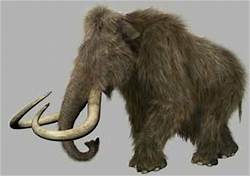
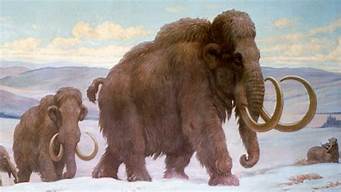
The Woolly Mammoth with the fat layer behind the neck and the layered to tooth (right)
Woolly mammoths also had an extra hump on their backs to store fat for the biter northern winters.

The Mastodon…best distinguished from a Woolly Mammoth by the absence
of a pillow of fat behind the neck.
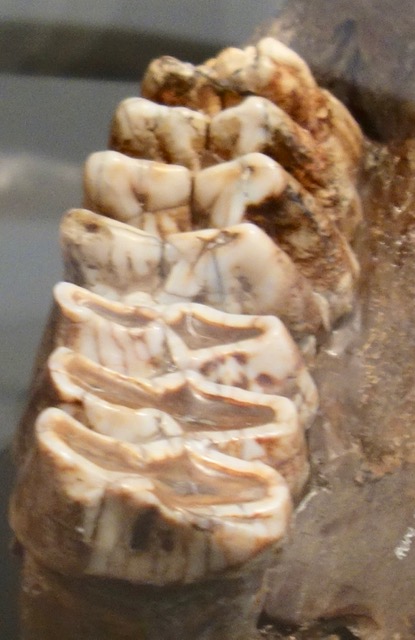
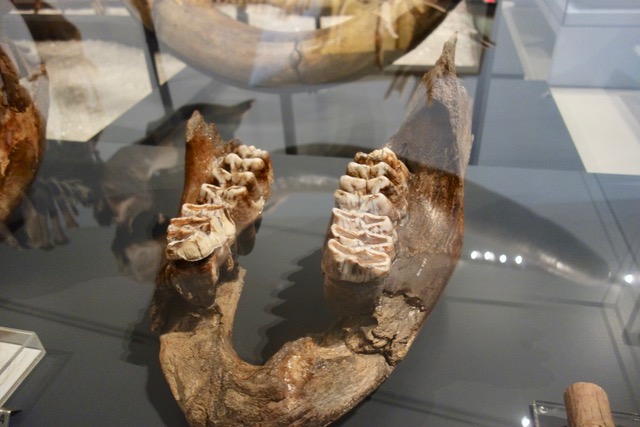

Mastodont (mastodon) teeth had cone shaped cusps for eating branches.
We know a lot more about the Woolly Mammoth because we have discovered so many pieces of them. In Siberia whole carcasses
of Woolly Mammoths have been found when slabs of ancient ice melt…flesh, hair, skin. bones and teeth. And more will be found now the
earth is warming so fast. So much has been found that a few scientists have considered using mammoth genes to recreate the animals with
Asian elephants as the hosts. Imagine that. The idea is not quite as preposterous as it sounds. Mixing Mammoth genes from frozen carcasses with
Asian elephants would increase their tolerance to the cold…allow them to trample the tundra and make room for the grasses that once
flourished there. The grasses would feed a whole raft of animals. And impede the melting of permanence frost thereby stopping the
release of immense quantities of carbon into our polluted atmosphere. Wait a minute…this gets just too fantastic. I cannot grasp it so I better STOP!
Pushing an idea so far that it becomes science fiction. But tinkering goes on and on.
Guess what? Now I know who has my Woolly Mammoth tooth. Must be these gene manipulators. A Parkdale student must be among them. With
a little more tracking I may find the culprit. Student? No, it could be a teacher.
alan skeoch
dec. 9, 2018
